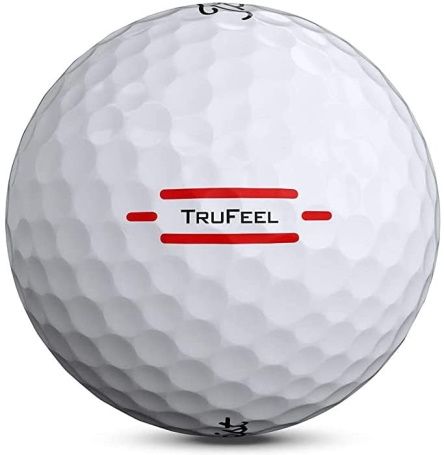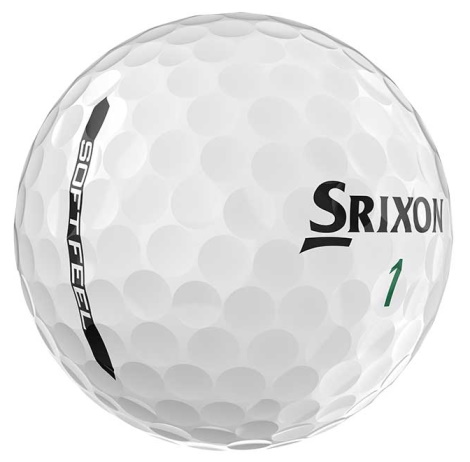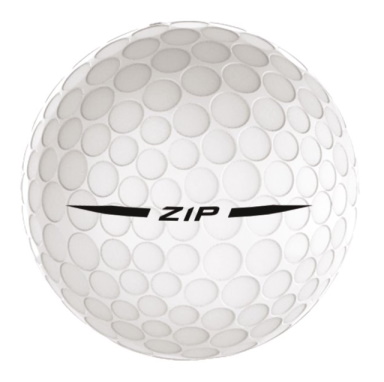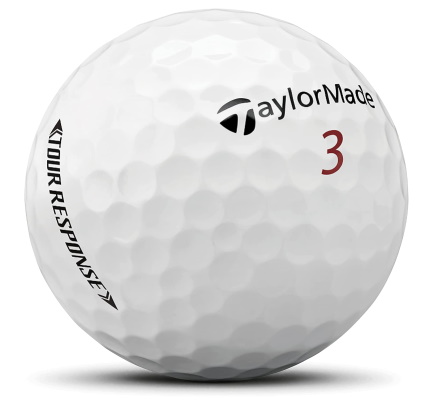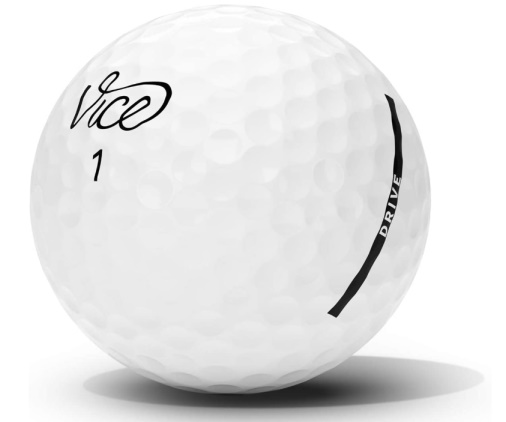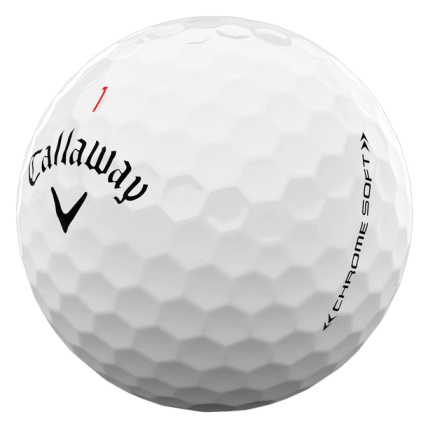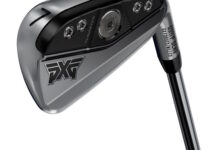Golfstead is reader-supported. When you buy through links on the site, we may earn an affiliate commission at no extra cost to you. Our affiliations include, but are not limited to, the eBay Partner Network and Amazon Associates.
Every beginner making their first foray into the game of golf is unique, having a particular swing speed (slow or fast), natural shot trajectory (low or high), and goals.
In our opinion, when a beginner is learning how to make solid contact with the ball, they should be using a softer ball with well-rounded performance. This means good distance and launch off the tee, good control with approach shots, and good spin and feel around the greens.
Then, once a beginner or novice settles into a swing and a particular style of play, they can consider a goal-oriented golf ball such as a distance ball or ball that spins a lot.
The sheer number of options on the market can make the process of choosing the best golf ball for you difficult and overwhelming. Fortunately, you’ve come to the right place.
In this guide, we’ll review and compare our picks for the best golf balls for beginners across a range of different brands.
Note: Golfstead has tested and/or conducted in-depth research into all of the products featured in this guide. Our editorial process for these rankings takes into account a mix of many factors which may include performance, reliability, usability, value for money, cost, and the general consensus from other users of the product. The list that follows may be reassessed or updated over time.
Our Top Picks For Golf Balls For Beginners
Based on our own testing, research, and experience, here are our top selections:
- Titleist TruFeel Golf Ball
- Srixon Soft Feel Golf Ball
- Callaway Supersoft Golf Ball
- Wilson Zip Golf Ball
- Volvik Power Soft Golf Ball
- TaylorMade Tour Response Golf Ball
- Vice Drive Golf Ball
- Callaway Chrome Soft Golf Ball
1. Titleist TruFeel Golf Ball
The Titleist TruFeel earns the #1 spot on our list because it has a soft feel, excellent long-game distance, and good control around the greens. It’s also backed by arguably the world’s top golf ball brand.
This is the ideal ball for beginners to be able to jump into the game with great all-around performance at an affordable price.
The TruFeel is claimed by Titleist to be their “softest ball”, with the latest iteration being re-designed with a faster core and thinner cover for improved greenside feel. The two-piece construction consists of:
- a larger, faster, low-compression TruTouch core for more distance
- a reformulated, thinner TruFlex cover for super soft feel and control around the greens
The ball has a spherically-tiled 376 tetrahedral dimple design that reduces drag and maximizes lift for added distance.
The TruFeel ball is available in white and high-optic yellow, with a matte red variant arriving in the second half of 2022. It’s particularly effective for low and mid swing speeds, and it really doesn’t do anything poorly.
2. Srixon Soft Feel Golf Ball
The Srixon Soft Feel, a very successful ball that has earned high marks from critics, provides incredible softness, excellent distance off the tee, and solid spin control around the greens.
The 13th generation of the Soft Feel introduces the latest iteration of Srixon’s FastLayer Core, which is the same core used in their premium balls. This technology reduces long-game sidespin, but at the same time, provides perfectly soft feel from tee to green.
This ball has a two-piece construction consisting of:
- a reformulated FastLayer Core that transitions from a soft inner core to a firmer outer edge. This core snaps back to shape after impact more quickly than ever, producing more ball speed.
- a soft, thin ionomer cover that increases spin with wedges and provides a softer feel on short game shots.
The Soft Feel features Srixon’s proprietary 338 Speed Dimple pattern. This pattern works to reduce drag, increase launch, and help the ball go farther and straighter with a more penetrating flight.
The ball is also available in the Soft Feel Lady variant and in colours Tour Yellow and Pink.
We find that the Soft Feel tends to do particularly well with beginners and senior golfers. Overall performance is really great, and the alignment marking and affordability are a nice bonus.
3. Callaway Supersoft Golf Ball
The Callaway Supersoft has been an extremely popular golf ball for many years, and for good reason. It has soft feel with a low compression rating of 38, allowing beginners with slower swing speeds to compress the ball and generate a lot of distance.
The Supersoft isn’t just soft; it’s also fast, durable, and generates high launch and low long-game spin, all while maintaining excellent spin control around the greens.
Beginner golfers often struggle with slices, and the relatively low spin of the Supersoft will help take the edge off those bad shots.
The Supersoft has a two-piece construction consisting of:
- a HyperElastic SoftFast Core designed to enhance ball speeds while avoiding a firmer feel
- a refined Hybrid Cover that maximizes contact with the clubhead for improved wedge control
In addition, HEX Aerodynamics reduce drag and increase lift for more carry, distance, and stopping power into greens.
The Supersoft golf ball has stellar ratings on the Callaway store. We love its length off the tee, performance around the greens, and affordability compared to other balls.
Also available is the Supersoft MAX golf ball which has a slightly larger diameter that is intended to be a little easier to hit. This could be an even better option for some beginners.
4. Wilson Zip Golf Ball
The Zip by Wilson checks so many of the boxes that would make it ideal for beginners. It’s fast and low-spinning off the tee. It performs very nicely around the greens. It has a soft feel with low compression. It’s relatively inexpensive.
On top of that, it has plenty of social proof to back it up.
This ball has a compression rating of 50 and a two-piece construction that consists of:
- a patented Zero Compression Core that is rubber-blended for soft feel
- a relatively soft Surlyn (ionomer) cover that improves feel and increases spin with irons and wedges
The Zip ball has a unique dimple pattern called 302 PhD aerodynamics. This pattern consists of flat-bottomed, shallow, pan-head dimples that reduce drag and create a powerful, stable flight.
The Zip is only available in white, but it really packs a lot of value for the price. We love it not only because of its solid tee-to-green performance, but also because it retains its soft feel in colder temperatures.
5. Volvik Power Soft Golf Ball
The Power Soft is undoubtedly one of Volvik’s best distance ball offerings. What makes it particularly worthy of being featured, in addition to the length, is the impressive control around the greens, availability of five glossy high-visibility colours, and great price.
This ball has earned high average ratings on the Volvik website. It’s designed to produce a mid-high launch and lower spin.
The Power Soft’s low-mid compression rating of 70 is ideal for swing speeds of 75-95 mph. The two-piece construction consists of:
- an oversized Power Core that contributes to explosive ball speed and distance
- a soft ionomer cover that provides good feel and control around the greens
Other features include:
- a patented dimple design for a stable, consistent ball flight
- available in white, orange, green, red and yellow
Another thing you can do is order a custom Power Soft golf ball, with over 30 colour options, two finishes, and the ability to add your own personalization message or logo. This is a good opportunity for those who want to showcase their personality on the course.
6. TaylorMade Tour Response Golf Ball
The TaylorMade Tour Response ball is the perfect choice for the beginner who has a low to moderate swing speed and wants to get a taste of Tour performance.
The Tour Response, with its 70 compression rating, does not have a two-piece Surlyn construction like most of the other balls featured here. Instead, it has a three-piece construction consisting of:
- a Hi-Spring Core designed to maximize energy transfer and ball speeds at impact
- a proprietary Speedmantle with High Flex Modulus (HFM) which acts as a firmer second layer around the core that helps the ball explode off the face
- a soft, cast urethane cover formed by a crosslinking chemical reaction, the end result of which is improved durability, shear resistance, and spin around the greens
The soft nature of the Tour Response helps the grooves of shorter irons grab the ball and produce spin, while at the same time, a new Tour Flight Dimple Pattern (found in the TP5 Tour balls) promotes maximum carry distance with the long clubs.
This ball is available in white and yellow, and it’s also available in a special stripe pattern (Tour Response Stripe balls) that helps with putt alignment and roll feedback.
The Tour Response golf ball is engineered for very low driver spin, high launch, low iron spin, and high wedge spin. Go here to see what people are saying about it.
7. Vice Drive Golf Ball
Some beginners will want to play a distance ball straight away. In that case, serious consideration should be given to the Vice Drive, which is specifically marketed towards beginners with low to moderate swing speeds.
The Drive ball is designed for maximum distance and soft feel. It made the 2020 Golf Digest Hot List, was featured in the golf.com performance golf ball recommendation list, and benefits from high critic and consumer reviews.
The Vice Drive is engineered for softer feel and has a low-mid compression rating of 50. Its simple two-piece construction consists of:
- a large Energy Speed Core (ESC) that reduces driver spin and increases ball speed for low-to-mid swing speeds
- a Surlyn cover that is extremely durable and cut-resistant
Other features of the Vice Drive are:
- a 312 dimple pattern which stabilizes the trajectory and minimizes air resistance
- a KIL alignment aid for better putting performance
According to swing robot tests at an independent laboratory, the latest iteration of the Vice Drive surpasses the previous model in terms of driver distance and wedge spin rates. It also produces more carry and total distance than the Titleist Tour Soft and produces less driver spin.
The Vice Drive ball is at a fantastic price point, and in our experience, it strikes the perfect balance between being firm off the tee yet soft around the greens.
8. Callaway Chrome Soft Golf Ball
The Callaway Chrome Soft has been an extremely popular golf ball for many years, with high ratings on the Callaway store.
The Chrome Soft has a soft feel with a medium compression rating of 70, and its well-rounded performance is suitable for every type of golfer.
This ball is designed to perform optimally from tee to green, meaning big distance off the tee, high launch with irons, and lots of spin control around the greens. The ball is also engineered for forgiveness and tight dispersions, which beginners will appreciate.
The latest iteration of the Chrome Soft has a three-piece construction consisting of a mantle layer and:
- a new hyper-elastic SoftFast Core for optimal compression and performance through the bag
- a soft urethane cover for feel and control
The standout technology of the new Chrome Soft is Callaway’s Precision Technology. This allows ultra-precise design manufacturing down to 1/1000 of an inch, resulting in faster ball speed, tighter dispersions, and better overall performance.
The Chrome soft also employs a HEX Tour Aero dimple design meant to maximize carry and minimize drag.
Golfers find the 2022 Chrome Soft to be a marked improvement over previous iterations, delivering even better greenside control, better feel, and better distance.
Buying Guide
There are many golf balls on the market, and knowing which one to choose isn’t necessarily easy, especially if you’re not sure what to look for. This guide will provide you with the education you need in that regard.
As a beginner, it’s not so critical to play the “perfect” golf ball because you probably still need to learn the basics of the game and how to make a decent swing. But generally, you want a golf ball that facilitates distance off the tee and that also has good feel and control around the greens.
If you want to find the right golf ball, here are the most important factors to consider:
1. Compression

The ability of a golf ball to compress is quantified in something called the compression rating, and it usually ranges from around 30 to 120.
The lower the compression rating, the less club head speed is required to sufficiently compress the ball to produce a “rebound” affect that leads to more distance. Conversely, a high compression rating will require a higher club head speed to achieve sufficient compression of the ball.
A general rule of thumb is that a golfer should have a swing speed as close as possible to X mph to hit a ball with a compression rating of X. But this is often not accurate; for example, a ball might have a fairly low compression rating of 60 but be designed for higher swing speeds of around 100 mph. Factors such as temperature can also affect the compressibility of a ball.
Beginners won’t really know what their swing speed is if they haven’t settled into a golf swing yet. Once they do, it will likely be anywhere from 85-95 mph, meaning they would benefit from a softer ball with a low or moderate compression rating. Most of the balls featured on this page have these characteristics.
2. Price

Price is very important when shopping for a golf ball, and perhaps even more so for beginners.
As a beginner, you definitely don’t want to be spending a lot of money on premium golf balls like the Titleist Pro V1 which can cost $50 or more per dozen. There is just no sense in this since you’re still learning how to play the game and are liable to lose a lot of balls during your round.
Cheaper balls and “value balls” that cost $25 or less per dozen are ideal because their performance is more than sufficient and it won’t be so much of a loss if you plunk a bunch of them in the water.
Possibly an even better option for beginners is to buy used (recycled) balls in bulk on places like eBay. We recommend only looking at balls with condition ratings of AAA or above.
3. Cover

The cover material of a golf ball can have a major impact on its performance. There are two main types of covers: Surlyn and urethane. Some people might consider ionomer, which includes Surlyn, as another type.
Generally, golf balls with ionomer or Surlyn covers are more durable, spin less, and fly a little farther. They also tend to be cheaper.
Golf balls with urethane covers generally spin more, provide a softer, more premium feel, and offer greater control and spin with the shorter irons.
Although this is the generalization, recent advancements in technology have helped urethane covers gain nearly all of the benefits of Surlyn covers. Today, the main drawback of urethane is a higher price and possibly less distance off the tee for slower swingers.
In most cases, beginners are better off playing golf balls with ionomer covers because they don’t have the swing speed or the skill to take advantage of the benefits that urethane covers can provide. This is why most balls marketed towards beginners and low-skill players have ionomer covers.
4. Colours

Something many people might not think about is the colour of the golf ball. A lot of golfers will automatically reach for the white ball, but as it turns out, that’s not necessarily the best option.
This is where high-visibility golf balls come in. These balls are exactly the same as the standard white ball but come in a variety of colours including green, yellow, and orange.
Beyond providing an aesthetic flare that might suit your personality, the main purpose of coloured golf balls is to make it easier to not only keep track of the ball while it’s in the air, but also to spot the ball wherever it rests on the course.
It’s definitely worth checking if whichever model of golf ball you’re interested in is also available in high-visibility colours, especially if you’re a beginner who is prone to bad shots and often needs to search for their ball. It’s certainly fine to just play a white ball if you want, but coloured balls can make your life easier.
5. Dimples
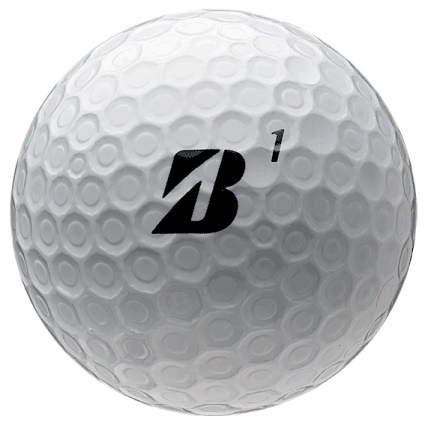
We definitely don’t recommend choosing a golf ball based on its dimples alone, but it’s worth knowing what their purpose is.
Most modern golf balls have between 300 and 400 dimples. Although golf ball manufacturers have their own ways of dimpling their balls, the goal is the same: to reduce drag and increase lift resulting in more distance.
Dimples are essential in order to get the aerodynamic performance expected from golf balls today, as opposed to smooth balls.
Beyond the number, dimples can also have difference shapes (such as spherical or hexagonal) and be arranged in different patterns.
It’s difficult if not impossible for the average golfer to predict the ultimate effect of a specific dimple configuration, so your best bet is to look at what the brand says about the dimples of a particular golf ball and consider if it matches your goals as a beginner.
Conclusion
When it comes to the best golf balls for beginners, there are two ways of looking at it. The first is that because beginners often have slower swing speeds and need help with launch and distance, they tend to benefit from low-compression distance balls.
The second is that because most beginners are still trying to find their game and their swing, they can benefit from balls with good all-around performance that aren’t necessarily designed to maximize distance.
Either way, the ball that a beginner golfer uses isn’t very important as long as it’s something half decent and it’s not damaged.
Basically, we recommend a lower-priced ball that has good ratings. We suggest trying several of the balls featured on this page and seeing which one performs best for you.
Each of the golf ball models listed above deliver exceptional performance for the cost. We’ve given you the information you need; now it’s up to you to go the rest of the way.
It’s also very beneficial to read customer reviews to acquire some useful insights as to how golf balls actually perform. This will help you a great deal in the decision-making process.
Thanks for reading this guide. Which golf ball are you interested in as a beginner? Do you have any questions? Feel free to leave a comment down below.

